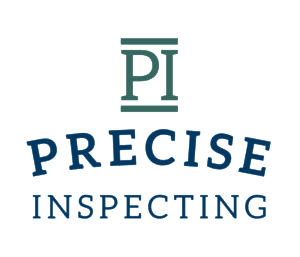10 Fall Home Maintenance Tips
Every home owner knows that homes need regular maintenance to keep it in good condition. Home maintenance is something that needs to be done, particularly during changing seasons. Simply by performing these easy small things, home owners can rest assured knowing they avoided possible issues.
What are the most effective ways to prepare your home for the fall? These are our top 10 fall home maintenance tips!
1. Maintain Your Furnace

It’s best to schedule your annual furnace maintenance in the early Fall so you can catch any issues and take care of them before it starts to get really cold. This way, you can make sure it is operating efficiently and that there aren’t any issues that need to be addressed.
4 Ways to Prepare Your Furnace for the Winter
- Change the air filter – Your air filter should be changed every 3-6 months, or more often if you have pets or live in a dusty climate.
- Clean the combustion chamber – Using a shop vacuum and a wire brush, you can clean off any buildup that would otherwise cause corrosion and poor energy efficiency.
- Inspect the flue – Check the flue for any leaks, and seal them with foil tape if you find any. If you find large leaks and corrosion, you might need to replace the flue.
- Clean floor vents – Clean the floor vents with a vacuum every year, to make sure that they are not obstructed and to keep debris out of the furnace.
2. Weatherproof Your Doors

Weatherproofing doors is the process of assessing weather stripping and gaps. This helps determine if there are any leaks or a draft. If you find a leak, replace the weather stripping and re-caulk if necessary.
Weatherproofing helps prevent water from entering your home and eliminates drafts. Proper weatherproofing can prevent water damage and reduce your utility bills.
How to Weatherproof a Door
- To weatherproof door, all you need to do is look and see if there’s any light coming through. If there is, use caulk or backer rod to fill in the gaps and consider replacing any damaged weather stripping.
You should check your weatherstripping on an annual basis but you’ll typically only need to replace it every few years, depending on the climate you live in.
3. Clean Your Gutters

Nobody enjoys cleaning gutters but it is one of the most important tasks to keep your home in shape. Without regular maintenance, clogged gutters can cause expensive issues – like leaks, roof damage, or even foundation issues.
How to Properly Clean Your Gutters
- Gather your supplies. All you need is a ladder, a bucket, a hose – and gloves if you don’t want to get your hands dirty.
- Place the ladder safely and securely on the ground close to the gutters that need to be cleaned. You don’t need to get on the roof to clean the gutters, you can stay on the ladder.
- Remove any debris from the gutters and collect it in your bucket.
- Once all the debris is removed, use a hose to flush out the gutters.
Generally, it’s recommended to clean your gutters twice a year. Late Spring and Early Fall are the ideal times to do it. But if you have a lot of trees around your home, you’ll need to clean them out more often to avoid the problems that can arise from clogged gutters.
4. Flush Your Hot Water Heater

Flushing your water heater is necessary to remove sediment from the tank, which helps increase it’s life span. Some homeowners tackle this on their own but if you’re not comfortable with tools, consider hiring a professional. Whatever you do, make sure it gets done. The cost of annual maintenance is a whole lot less than the cost of a new water heater.
5. Turn Off Exterior Faucets

You need to turn off the water supply to your exterior faucets so that the pipes don’t crack or freeze, which can lead to leaks and more expensive issues. Some manufacturers have started producing “frost-free” faucets with a special type of sillcock that prevents freezing. If you think you have frost-free exterior faucets, it’s best to double check.
If it’s not frost-free, find the shut-off valve and turn it off. The shut off valve is usually located somewhere on the pipe that’s connecting to the faucet from inside your house. After you turn the water off, turn the faucet on and open the adjacent bleeder valve. This will force any remaining water to drain out.
6. Winterize A/C System

Your HVAC system can be damaged by ice, snow, and debris. It’s a good idea to take care of this before it gets too cold outside.
How to Winterize Your A/C
- Start by removing any debris from the unit and use a hose to rinse it off.
- After letting the unit dry, turn off the power at the electrical circuit. This keeps it from automatically turning on if a day is warmer than usual.
- Install rubber insulation around the pipes. This protects the pipes from freezing.
- Cover your unit with an A/C cover or piece of plywood to keep debris, ice, and snow from building up.
7. Clean Chimney And Fireplace

Your fireplace and chimney need to be cleaned and inspected once a year for safety purposes. This usually requires a professional because they can easily recognize any issues.
If you don’t use your fireplace, you may be able to go two years without regular maintenance but it’s not recommended. The chimney is a common failure point in the roof, so regular maintenance can prevent leaks or detect them in early stages before the damage really adds up.
8. Test Your Sump Pump

If you have a basement, you probably have a sump pump. The sump pump is important because it keeps water out of your basement. If the sump pump failed and too much water were to build up underneath your home, you could be dealing with water damage, mildew, mold, and even foundation issues.
It’s a good idea to test your sump pump regularly throughout the fall and winter, especially when there is a heavy downpour. You can either choose to hire a professional, or follow this guide to do it yourself.
9. Check for cracks in pavement

Small cracks in pavement can turn into serious damage. Cracks in the pavement are caused by thermal expansion – or freezing. This only gets worse in the Winter, so it’s a good idea to inspect your pavement in the Fall.
Use asphalt driveway repair caulk to plug up any small cracks and prevent them from getting bigger. If you have a lot of cracks in your driveway, you might want to consider re-sealing it.
This little bit of preventative maintenance goes a long way in keeping your driveway in good shape.
10. Inspect Your Windows

Inspect your windows for loose frames or any damage in the Fall to make sure they’re in good condition for the Winter. Depending on the condition you find them in, you might want to consider installing additional weather stripping or caulking. This will help to prevent drafts and reduce your power bill.
If you’re looking for other ways to improve efficiency, think about investing in energy-efficient blinds for your windows. Combined with blackout curtains, this can help insulate your windows and keep your power bill low.
Are You Ready For The Cold Weather?
Regular home maintenance is important to avoid having to deal with major repairs and unexpected costs. Most of these tasks aren’t that difficult or time intensive, and if they are – you can always hire a professional. Give us a call if you find an issue in your home you’re not sure about. We’ll help you determine whether or not it requires immediate attention.



